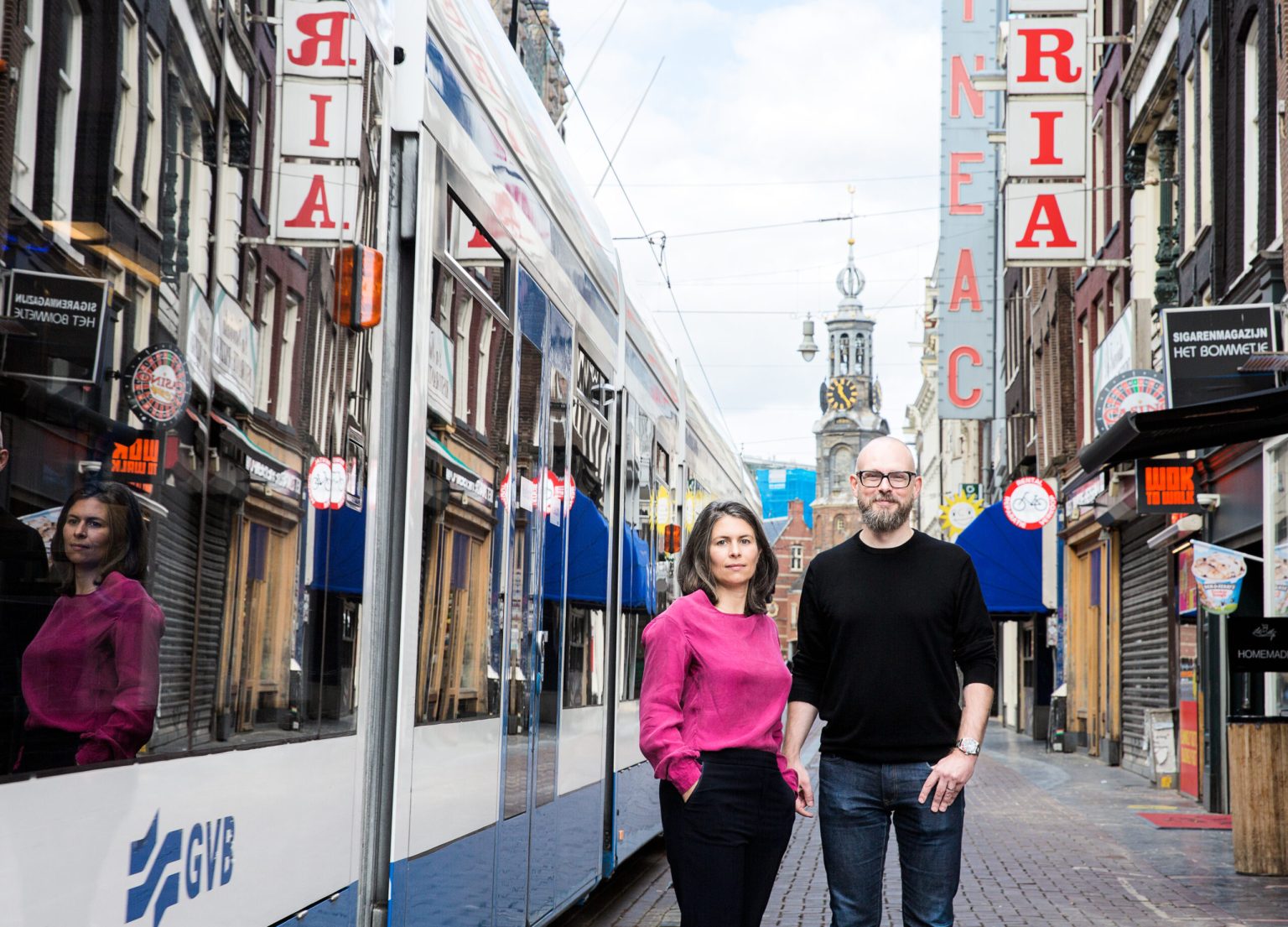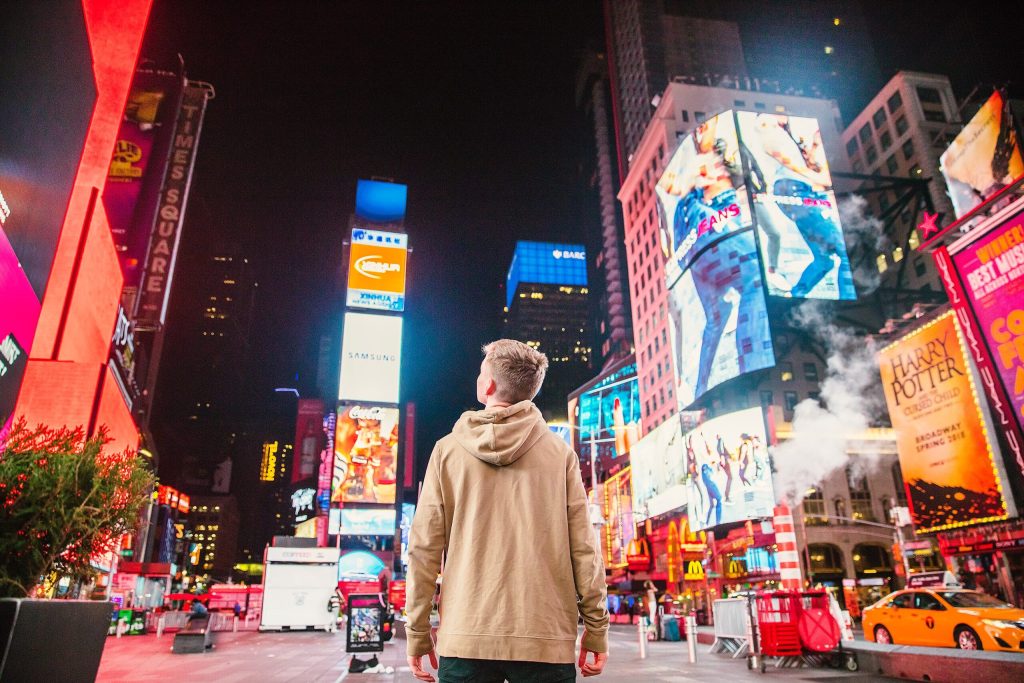What do little flies that save cleaning costs and men that use dryer fluff to pick up women have in common? Well, behavioural scientist dr. Eva van den Broek (and marketing strategist Tim de Heijer) wrote a book about both: The bluebottle fly effect, how everyday phenomenons secretly influence your behaviour. The book will be in stores from 20 May.
How do those womanizers use dryer fluff to pick up women? Or do we have to wait until the book is released for the answer to that question?
Haha, I’ll let you in on this one. It’s an example by Tim den Heijer. He wrote this wonderful piece in the book about womanizers. There are a couple of things you can do to make people like you. A lot has to do with giving something to someone or doing something selfless for someone. The specific example of the dryer fluff is about making people feel like you’re doing something for them and touching them as well. So the womanizer takes some dryer fluff from his own pocket and pretends to pick it off the lady and shows it to her. It shows you’re capable of doing something nice for someone and it also creates an awkward situation from which you’re freeing the other person. A double hit.
Actually it was a moment after Tim and I were introduced to each other by the publisher. The bluebottle fly effect was a term that didn’t exist yet. It sounds good and is inspired by the butterfly effect where the wing beat of a butterfly on one side of the world can create a storm on the other side. That concept: a small phenomenon, a big effect is what we tried to capture, but aimed at the behaviour of people. Tim came up with the idea of a bluebottle fly. It’s small, irritating and hard to beat off and you can squash it, but before you know it, there’s another one flying in your living room.
How did you find out that our behaviour is actually being influenced all the time?
I studied artificial intelligence and I tried to predict human behaviour. And you find out that people don’t behave very systematic or rational and they don’t strive for efficiency. On the contrary, we’re being distracted all the time. All these distractions have a huge influence on our behaviour. Actually all ministries, municipalities and companies are engaged in changing behaviour. Whether they want you to register in the donor registration, or getting mopeds to ride on the streets instead of the bicycle lanes or simply selling a product. The bluebottle flies are applied everywhere.
Why do you think it’s important for people to be aware of this bluebottle fly effect?
Consider a topic that everyone thinks is important like climate change. You can try to solve it on an individual level, like the old Dutch promotional slogan: “Een beter milieu begint bij jezelf” (A better environment starts with you), but suppose you work for the government or in a company and you have the chance to make even more impact. The book gives you some handles to recognize the bluebottle flies so you can make small adjustments in your daily life.

It sort of reminds me of manipulation.
Well, that’s the slippery part of it, the ethical dilemma. The first thing you’ll do when reading the book is recognize all the different bluebottle effects and maybe apply them to your partner, children or neighbour sometimes: “Oh wait, I shouldn’t tell my children to do something, but I should offer them a choice.” So instead of telling them: “Put on your rain boots!”, you ask them: “Do you want to wear your red or your green rain boots?” That will often lead to the result you want. Of course you can apply this principle to selling a product and also misleading people. I think everyone tries to influence another person sometimes.
Where is the ethical boundary for you?
The goal you want to achieve with people shouldn’t come as an unwelcome surprise. You want people to agree with your goals when you explain your intentions or have a choice not to agree with you. The goals should be both transparent and avoidable. Especially when it comes to marketeers and policy makers. For instance when you want to encourage people to travel by train instead of by car, there still has to at least be an option to travel by car, for whatever reason that may be.

While writing this book, you probably came across a lot of examples. Which one do you remember most?
It’s one that I apply a lot myself and that leans towards self-help, but I think a lot of people deal with this. From behavioural-economic research we know people find it hard to think about the future and act rational accordingly. People are more attracted to the thought of having one euro now than two euros in two weeks.
In the long term you’ll be more satisfied when you do your taxes or your workout than you’ll be when you are lying on the couch. While in the moment we often choose to lie on the couch.
There are ways to deal with that. My favourite is temptation bundling. It’s about tying temptations together. Researchers found out what happens when you give students a gym membership and you put an mp3-player in the locker at the gym with a guilty pleasure audiobook on it. It turned out students were more excited to go to the gym and even were willing to pay for the mp3-player in their locker. A brilliant example where no one is being manipulated. You’re only given a voluntary option that will lead to a positive behavioural change.
What lesson do you want this book to teach?
It’s so much fun to know that you can play with these little effects. To have your co-workers clean out the dishwasher for once or have your child put on her boots in an easy and fast way. That gives a huge satisfaction and causes you to realise you can’t always blame people for what they do. It will make you a more curious and open minded person capable of more self-reflection!
Website: bromvliegeffect.nl


